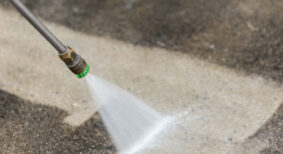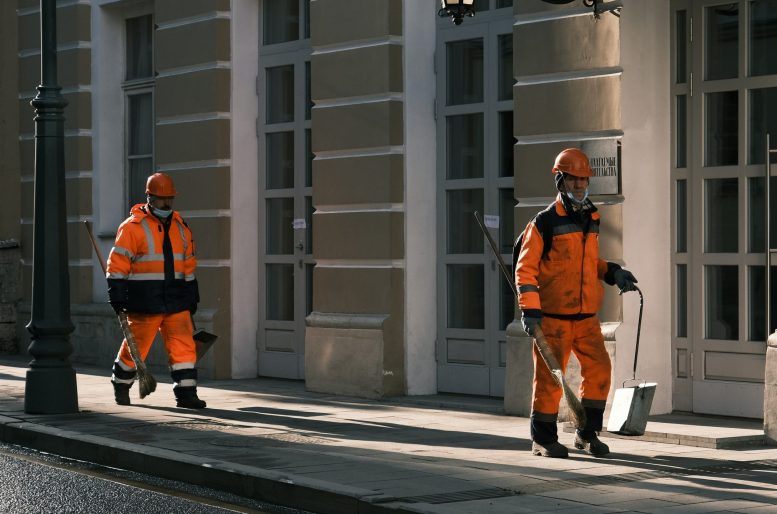The COVID-19 pandemic has brought a renewed focus on, and appreciation of, the importance of proper cleaning and disinfection for both facility managers and operators. But we must not forget to show some love to restoration, too.
Whether it’s cleaning up after water damage, mould control and removal, or safeguarding the future of buildings, this field of work is an integral part of facility maintenance. It may not have hit the headlines in the way that infection control has, understandably, over the last 18 months or so, but all over Canada and beyond, restorative teams are hard at work preserving and improving facilities and properties.
Toronto-based Impact Cleaning Services operates across Ontario, from Ottawa to London, Sarnia, and Fort Erie, and stretching as far north as Barrie and nearby areas. Over its 65 years of history in the industry, the business has offered a mixture of varied cleaning and restoration services, offered in-house to all clients.
FC&M spoke to Impact director Yiannis Boutsalis about the firm’s work in restoration, why restoration work cannot be overlooked within the wider industry, and how COVID-19 has intensified the challenges of facility maintenance.
This interview has been edited for length and clarity.
Tell us how Impact operates today, and how it got to this point.

Yiannis: We’ve been doing this for 65 years. My father has been here for over 40 years and he ended up taking over as president in 1997. Wherever we do cleaning, we also do restoration work. We offer it to all our clients as an in-house service because we have all the equipment and all the expertise to be able to take on that responsibility for our clients. Any time anyone has an emergency or even planned services, we can provide it, from mould mediation to water damage to the cleanup and some of the construction afterwards. Focusing on smaller-scale work rather than largescale restoration and construction projects allows us to stay nimble and a lot less overhead-heavy and operate as efficiently and effectively as possible.
Why should restoration services be a consistent focus for facility managers?
Yiannis: With restoration services, it’s truly the case that an ounce of prevention is worth more than a pound of cure. Being prepared with your building for any situation that might happen is so vital. It’s easy not to appreciate the importance of it until you’re confronted with a crisis you’re unprepared for. It’s often all about being able to react with the urgency and ability necessary to mobilize in that last minute, to get to the facility and mitigate any further damage or further issues. I think restoration services are usually seen as vacuuming up water, cleaning up after damage, removing something that’s unhealthy for the environment and patching it up afterwards. But just as important is the peace of mind for clients and tenants because it’s business interruption. It’s not just fixing the damage that occurred; you’re mitigating any future damage to the workplace. It can be very disruptive to anybody’s life to have to move out of their home or workspace for a week because sprinkler heads have broken or the stove caught on fire and damaged the unit.
A lot is necessary in terms of the planning, even just who you bring on board to do that work, making sure they’re accredited through the proper channels, ensuring they actually have the ability and tools necessary. Much like in terms of COVID-19, if you don’t have those necessary tools, processes, and personnel, you’re not going to be able to give the confidence to people that they can return to their place of work or living with the understanding that they are now safe and secure. If you go with a half measure, you’re always going to get problems in the end and also lose a lot of trust in your tenants and your team and just about everybody involved in the space you’re operating in. Restoration services are vitally important to any building.
COVID-19 has changed so much about cleaning and maintenance. How has restoration work been affected?
Yiannis: A key factor is that there’s now always the added layer of PPE as the first step of everyone’s safety. You never know if you’re going to be confronted with a biohazard or a natural hazard, so you always had a level of PPE and safety in mind. But with COVID-19 now a persistent factor, you’ll sometimes be in tight spaces with many people, and you have to protect yourselves as well as other people to make sure everyone around you is safe, particularly in high-traffic and essential facilities and spaces.
Just like with cleaning nowadays, with restoration, you have to make sure everyone is geared up the right way to respond to any call, and that does involve adding a little bit more to the checklist. Ensuring you have all the tools you need – PPE, the proper equipment, the right chemicals – so you’re not only cleaning up after the job but also disinfecting the space so everyone will be safe. We’re much more frequently having to respond to situations like sanitization or disinfection for COVID-19 much like we would do under normal circumstances for restoration work if it were water damage or emergency cleanup for any reason.
How much of Impact’s work is in the commercial/office space, and what specific challenges do those facilities bring?
Yiannis: Commercial and office facilities make up about 60 per cent of the work we do, while another 20 per cent would be in industrial and larger manufacturing facilities and things where the office is tied to the warehousing or the manufacturing plant. A challenge felt particularly keenly with office facilities has been how empty they are, as that doesn’t necessarily give you a good sense of what spaces are being occupied, where things are occurring, if people are coming into work, and how the building tends to be set up and operating. In facilities like a warehouse or a manufacturing plant or a shipping and receiving space, everyone tends to be coming in and out of the same doors and is likely to be in the same spaces. Not only that, but your scope of work covers that entire building itself, oftentimes with only one tenant or company within it.
In contrast, when you enter an office building, it can be a collection of 100 tenants or just one tenant depending on how much space they occupy. Each client or tenant in that space then has their own different requirements and necessities, and much of the space may be empty. Not only do you have property management informing you, but you have a variety of different rules and procedures in place. So, you often end up in a much larger and more varied environment: behind each door is a different stakeholder dictating the safety of their employees. That then has knock-on effects in terms of our own employee safety and processes.
Do you the pandemic has changed attitudes towards maintenance and restoration work? Will those changes last?
Yiannis: You do see more these days the appreciation of the work being done, especially when it comes to healthcare settings, education settings, food processing, and places deemed essential. I think people understand more the extent of cleaning and maintenance, but they don’t necessarily appreciate the number of hours that go into every day to keep facilities clean and safe. But now, when something gets added on that is vitally important to keep the space safe during these times, it tends to get more noticed. That’s nice to see because the public didn’t used to be that quick to appreciate the frontline staff.
With restoration, I think the scope of what people are going to expect will change. They’ll know it’s not just those cleanups like water damage and mould remediation and certain special instances like lead in confined spaces. I think the understanding of and the focus on what skills are needed, the level of protection and professionalism necessary to complete that work and be guaranteed in its results, will continued to be heightened. Also, there’s been a huge boost in the education of the benefits of becoming certified in the trade of restoration services. There are a lot of steps behind the scenes that go into making sure this job is being applied in a very secure and well-planned and educated way. Certain things like GBAC’s accreditation, that training comes in with restoration before you are even able to step foot on a job and be certified to handle the work. A lot of that education crosses over. Accreditation is going to be particularly important.
At the beginning of pandemic, everyone was willing to find a way to provide the necessary chemicals and solutions to keep everyone safe. As time goes on and you certify those things, the bar is raised, and that can only be a good thing.








